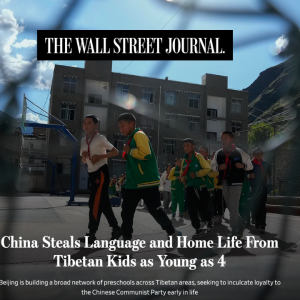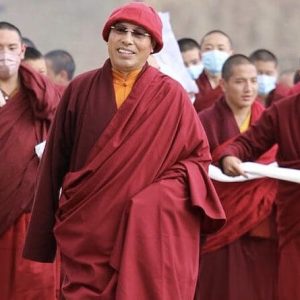Wall Street Journal, June 28, 2025By Josh Chin and Niharika Mandhana Original link: https://www.wsj.com/world/china/tibet-dalai-lama-china-schools-4733d519?st=W4ZNAX&reflink=desktopwebshare_permalink China has for at least two decades directed children in Tibet to state-run boarding schools at ever-younger ages, trying to gut Tibetan culture and blunt generations of opposition to Communist Party rule. It didn’t work as well as Chinese leaders hoped. Authorities frustrated...
Author: Pema Yoko (Pema Yoko)
Dr Gyal Lo at UN Human Rights Council: Tibetan Rights, Religion and Culture Threatened Amid China’s Interference in Dalai Lama Succession
Read Dr. Gyal Lo’s powerful remarks from a high-level UN side event in Geneva on June 27, where international experts warned of China’s growing interference in the Dalai Lama’s succession and the threat it poses to Tibetan religious freedom and identity. The event, hosted by the Helsinki Foundation for Human Rights during the 59th UN...
Tibetan children subject to abuse in Chinese government schools
The World June 2, 2025 Original link: https://theworld.org/segments/2025/06/02/tibetan-children-subject-to-abuse-in-chinese-government-schools A new report from Tibet Action Institute documents a pattern of physical abuse and neglect in Chinese-run boarding schools that many are forced to attend. The report alleges that the schools are designed to separate Tibetan children from their parents and away from their language and culture....
Boarding Schools Threaten Tibet’s Children, Future
May 28, 2025 Contact: Lhadon Tethong, Tibet Action Institute +1 (917) 418-4181 Children Face Abuse, Loss of Language and Culture in Chinese Government Boarding School System DOWNLOAD PDF REPORT HERE Boston – New evidence shows that Tibetan children face abuse, neglect, indoctrination, and identity erasure in the Chinese government’s network of colonial boarding schools and...
Tibet Groups Condemn Cremation of Deceased Tibetan Lama in Vietnam Without Family Consent Following his Death in Custody; Demand International Investigation
FOR IMMEDIATE RELEASE Body Reportedly Cremated Before Inquiry Fueling Suspicions of Chinese Involvement in Arrest and Death of Tulku Hungkar Dorje Rinpoche 21 April 2025 – Global Tibet groups voice vehement condemnation following reports of the cremation of Tulku Hungkar Dorje Rinpoche, a highly revered Tibetan leader, without family consent. Rinpoche is reported to have died...
G7 Fails To Challenges China’s Abuses In Tibet
Outraged Activists Call On G7 To Do Better 14 March 2025 – FOR IMMEDIATE RELEASE [LONDON] Tibet activists are outraged about the failure of G7 Foreign Ministers to raise concern about the human rights situation in occupied Tibet in the 2025 joint statement. Just weeks before the summit Tibet was ranked as the ‘least free’ place on earth,...













